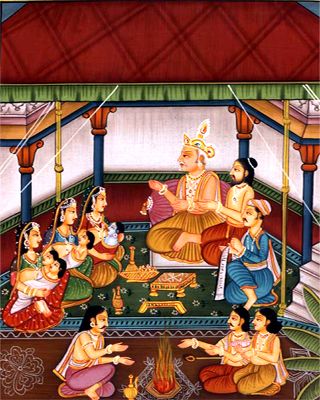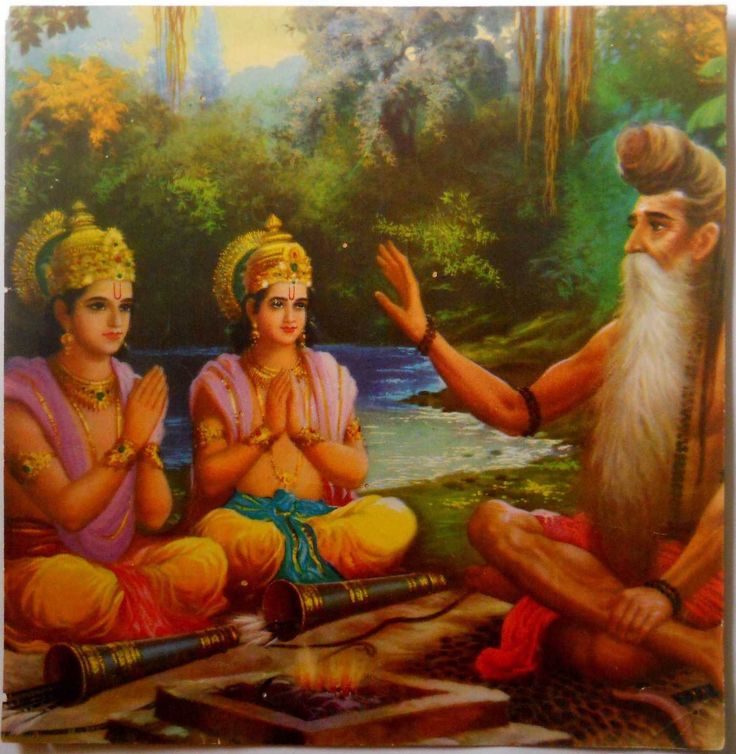In Hinduism, worshipers revere Lord Rama as a representation of morality, justice, and restraint. The Ramayana, an ancient Indian epic narrating Rama’s life and exploits, revolves around him. According to the epic, Lord Rama is the seventh avatar of the Hindu god Vishnu.
As we all know, the Hindu epic Ramayana is the tale of Lord Rama’s royal childhood. The story says that Rama was born in the city of Ayodhya to King Dasharatha and Queen Kaushalya. In this blog, we will know the salient details about Lord Rama’s regal upbringing, which is sure to fascinate you.
1. Lord Rama Birth and Transcend of the Royal Virtue

The estimated Lord Rama birth date is January 10, 5114 BC, in Ayodhya. So, according to the Indian calendar, the birth took place on Shukla Paksha in the month of Chaitra, between 12 noon and 1 pm. He was born to Dashrath, the king of Ayodhya. Lord Ram mother name was Kaushalya.
According to the Ramayana, Rama’s birth represents God (Vishnu) taking on human form. Therefore, upon the demigods’ approaching Brahma to request their release from Ravana’s control over Earth, Vishnu manifested himself and vowed to take on the human form of Rama and destroy Ravana. As, Brahma’s blessing rendered him impervious to all forces, including God, to save humanity.
Rama showed unshakable allegiance to his father, King Dasharatha, and was incredibly dedicated to both of his parents. So, even though Rama’s banishment was difficult, he gladly agreed with his father’s choice to respect the wishes of his stepmother Kaikeyi. He is all about his compassion for others, respect for elders, and devotion to dharma.
2. Lord Rama Education

Rishi Vashistha’s ashram served as the school for Lord Rama. This identical Gurukul system was followed even by Lord Krishna. It was Rishi Sandipani who taught him.
Rama was trained in the arts, sciences, military, and government as part of his royal education. Sage Vashishta, his guru, imparted him with immense knowledge and wisdom to fight and learn in life.
Within the Gurukul educational system, everyone shared the same privileges regardless of their social status. Therefore, it never mattered, be it a king’s son or an average man. Also, Lord Rama worshipped Lord Shiva every day. Here, he quickly gained a thorough understanding of the Vedas and other scriptures, besides other courses at Gurukul.
Sages and learned individuals, in addition to worldly education, guided Rama. His spiritual education shaped his character and understanding of higher principles.
3. Archery and warfare skills of Lord Rama

The Hindu mythology portrays Rama as an accomplished warrior and archer.
Sage Vishwamitra guided Rama in warfare and archery training. Vishwamitra taught Rama and Lakshmana various celestial weapons during their journey.
When facing the formidable Brahmin warrior Parasurama, Rama’s martial prowess underwent a test. Along with fighting Parasurama, Rama also showed him how skilled he was. Hence, this won his respect in the process.

It was during the swayamvara (marriage ceremony) of Sita, Rama proved his archery prowess again. He skillfully lifted and shattered the Shiva Dhanush, the heavenly bow of Lord Shiva.
The power of Rama’s archery is often a symbol of righteousness and precision. And, the Ramayana emphasizes dharma (righteous duty) in the face of adversity and virtue in a ruler. Hindu culture continues to honor Rama for his exemplary martial skills and moral principles.
An ideal son, husband, and king is what Lord Rama is all about. So, one can look to his life as an example of moral behavior and dharma, or justice. Despite hardship, upholding one’s moral principles and fulfilling one’s duty (dharma) are crucial lessons learned from the Ramayana.
